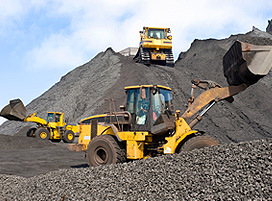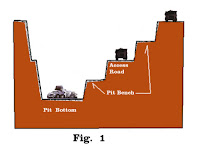If you scan any news source these days, you will find countless stories about the world’s unquenchable desire for mineable resources like oil, coal, and precious metals. Recently, Firwin has begun to extend its reach into the ever-growing world of mining. With this in mind, we thought this would be the perfect time to review the basics of this most crucial of industries.
A little background
Over the past century, the mining world has taken full advantage of amazing technological advances and innovation. Today, instead of using candles and canaries, miners use LED integrated explosion-proof cordless mining headlamps and multi-purpose gas detection sensors. However much technology mining now incorporates, the basic idea behind the act of mining remains the same: something you need is in the ground and you have to find a way to get it out. As one might expect, there is a wide variety of mining methods available today; yet when it comes down to it, all of them can be split into two basic categories: underground mining and open pit mining.
Open Pit Mining
As its name indicates, open pit mining is a method of extracting rock or minerals from open pits, like quarries and burrows. This ancient form of mining requires no tunneling and is utilized when substances are fairly close to the surface. These mines are not just big open holes. Instead, they consist of a series of ledges or benches, which companies dig at angles to allow for extraction without causing structural weaknesses. There are open pit mines all over the world and they yield everything from clay and coal to uranium and gold.
Underground Mining
If an area’s open pit mines are exhausted or impossible to build due to the inaccessibility of the desired resources, the mining process goes underground. There are several different ways to mine underground. You can build spiral tunnels that circle the deposit, sink vertical shafts adjacent to the ore, or create adits, which are horizontal excavations into the side of a hill or mountain. Unlike open pit, underground mining requires that you take into account a wide variety of added requirements. These include complex ventilation systems, area and local ground support, and of course finding a consistent, safe, and cost-effective way to get your materials to the surface. Just for reference, the deepest mine in the world is South Africa’s TauTona gold mine, which is over 12,800ft or almost two and a half miles deep.
Whichever mining technique you choose (or are forced to choose), there are a number of unique challenges that can’t be ignored. In our next blog, we will discuss the role that the insulation experts at Firwin play in making today’s mines safer and more effective.



Comments are closed